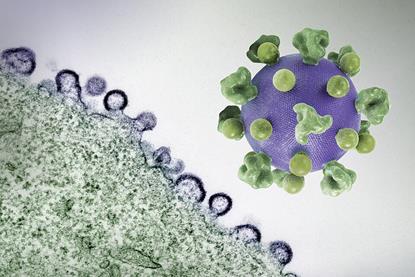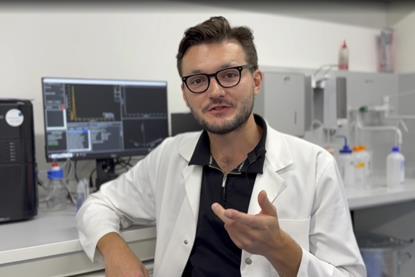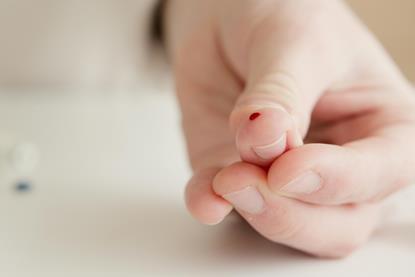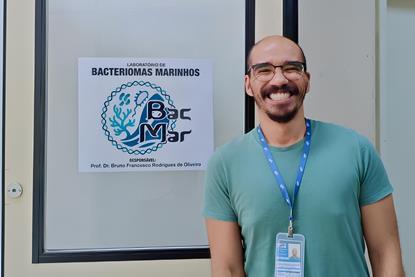Economic Equality
Across the globe there are huge disparities in access to basic services such as healthcare, education, and economic resources, with the UN estimating over 98 million people live on less than $1.90 a day. It is vital for microbial research to identify those areas which actively maintain cycles of poverty and disparity. In recognising the interconnected nature of human financial systems and environmental health, microbial research can be a leader in working toward Economic Equality.
News
Mutated baker’s yeast at the forefront of petroleum substitute tech
Researchers engineering Saccharomyces cerevisiae to produce 2,3-butanediol (2,3-BDO) introduced mutations into the genomic DNA. The researchers engineered four altered strains and subjected them to ethanol, heat, and low pH stressors.
Read story- News
Bacteria double as Trojan horse for artificial amino acids
Researchers have hijacked a natural transport system of the bacterium E. coli to develop a solution that allows artificial amino acids to be introduced into bacteria efficiently. This means the “amino acid toolbox” can be expanded for widespread use in medicine and the biotech industry.
- News
AFYREN and ESSE Skincare begin partnership to offer 100% natural cosmetic solutions with enhanced skincare performance
AFYREN, a greentech company offering manufacturers biobased, low-carbon ingredients through a unique fermentation technology, and South Africa-based Esse Skincare, a leader in microbiome skincare science, are partnering to introduce the world’s first bio-based propionic acid for the skincare industry.
- News
Algae show how to make two proteins from one messenger RNA
Scientists have uncovered a hidden feature of protein translation in green algae, offering a new perspective on the basic rules of gene expression.
More Economic Equality
News
Study links childhood vaccination to lower risk of drug-resistant bacteria
Children in Guatemala who received a common vaccine that helps prevent pneumonia were less likely to carry antibiotic-resistant bacteria, according to a new study examining whether rotavirus (RV) and pneumococcal (PCV13) vaccines reduce gut colonization by a group of bacteria.
‘Creeping catastrophe’: Climate change is driving global rise in infectious diseases, leading health experts warn
Infectious diseases such as malaria, dengue, and tuberculosis are considered to pose as great a challenge to global health as new or emerging pathogens, according to a study. Participants reported that climate change, poverty, and drug resistance are combining to create an escalating health crisis.
Horizon Awards 2025: Max Fisher named as individual winner of Dorothy Jones Award
Max Fisher, a leading Disability & LGBTQIA+ Advocate, and Senior Research Associate at ViaNautis Bio, has been named as individual winner of the Dorothy Jones Diversity & Inclusion Achievement Award 2025.
Point-of-care rapid tests can improve screening for latent tuberculosis
A new test shows promising results for detecting latent tuberculosis infection in resource-limited settings. Latent tuberculosis is often diagnosed using a laboratory test called QuantiFERON-TB Gold Plus - this was compared with another test, TB-Feron.
New prevention tools and investment in services essential in the fight against AIDS
On World AIDS Day, the World Health Organization (WHO) calls on governments and partners to rapidly expand access to new WHO-approved tools including lenacapavir (LEN) to drive down infections and counter disruption to essential health services caused by cuts to foreign aid.
New guideline on pre-exposure and postexposure HIV prevention
Multiple pre-exposure (PrEP) and postexposure (PEP) treatments are now available to prevent HIV infection. An updated Canadian guideline contains 31 recommendations and 10 good practice statements to help clinicians and other health care professionals offer these options to patients.
Fractional-dose vaccines can save millions during shortages
New research shows that using smaller, fractional doses of vaccines can significantly reduce infections during epidemics, especially when vaccine supply, delivery, or administration capacity is limited.
Research into zoonotic disease risks requires a One Health approach
A new evidence brief, based on a study by the Juno Evidence Alliance conducted in collaboration with CABI’s One Health Hub, has highlighted that a One Health approach is needed in research into zoonotic disease risks around the world.
We couldn’t get people interested in science - until we started speaking their language
In 2020, Puerto Rico faced a misinformation crisis. Melanie Ortiz Alvarez De La Campa reveals how five STEM undergraduates created a sci-comm organization that helped pass legislation, educated thousands, and created an inclusive database of Caribbean scientists.
Global Virus Network awards pandemic preparedness grants to advance global surveillance and early detection of viral threats
The Global Virus Network (GVN) is awarding pandemic preparedness research grants, totaling $160,000, to scientists across four continents, supporting innovative, investigator-led projects designed to enhance viral surveillance, early detection, and scientific preparedness.
Scientists reveal molecular cause behind “stuck” beer fermentation
Premature yeast flocculation (PYF) is a persistent issue in beer brewing, where yeast settles too early during fermentation. New research identifies multiple differential metabolites and confirmed galangin as a key factor that promotes early yeast aggregation.
Diphtheria toxin fragment harnessed to fuse lipid vesicles at neutral pH
Researchers have discovered a novel way to fuse lipid vesicles at neutral pH. By harnessing a fragment of the diphtheria toxin, the team achieved vesicle membrane fusion without the need for pre-treatment or harsh conditions, opening the door to new applications.
Scientists develop world’s first modular co-culture platform for the one-pot production of rainbow-colored bacterial cellulose
The team engineered Komagataeibacter xylinus for bacterial cellulose synthesis and Escherichia coli for natural colorant overproduction. A co-culture of these engineered strains enabled the in situ coloration of bacterial cellulose.
Maternal health programme cuts infection deaths by 32%
A landmark multi-country clinical trial has shown that a structured, sustainable approach to infection prevention and treatment can save women’s lives, cutting severe maternal infections and deaths by about one-third (32%) compared to usual care.
Researchers diagnose disease with a drop of blood, a microscope and AI
Scientists have developed an automated, high-throughput system that relies on imaging droplets of biofluids for disease diagnosis in an attempt to reduce the number of consumables and equipment needed for biomedical testing.
Drinking water people believe to be safe and clean often contain potentially dangerous bacteria
A study in Guatemala found the sources of drinking water people believe to be safe and clean often contain potentially dangerous bacteria. Bottled water sold in large refillable jugs was the most frequently contaminated with coliform bacteria – an indicator of fecal contamination.
Researchers boost biosynthetic capacity in yeast through extended lifespan
Scientists have demonstrated that combining lifespan engineering strategies with metabolic pathway optimization in Saccharomyces cerevisiae enables highly efficient sclareol biosynthesis, marking an advance in improving microbial production through lifespan engineering.
Scientist who harnesses bacteria to deliver green solutions is winner in 2025 Tata Transformation Prize
A scientist who harnesses bacteria to deliver green solutions has been named as one of the winners of the 2025 Tata Transformation Prize. Balasubramanian Gopal, PhD, Indian Institute of Science, has been named Sustainability Winner in the awards.
Pride in Microbiology Network: the road so far
Bruno Francesco Rodrigues de Oliveira, a founding member of the Pride in Microbiology Network, reveals how it has developed since it was launched three years ago - and what needs to happen next.






















